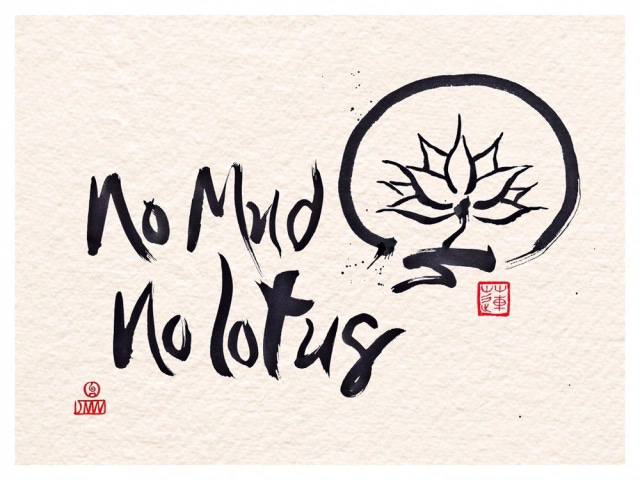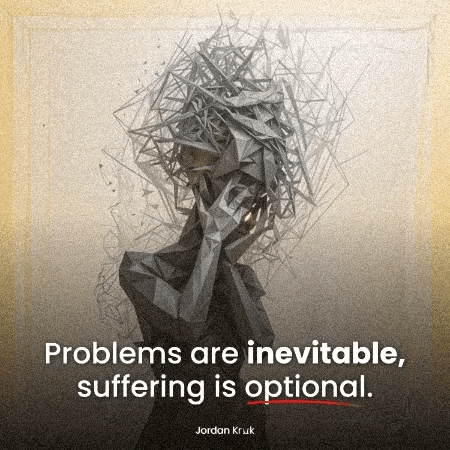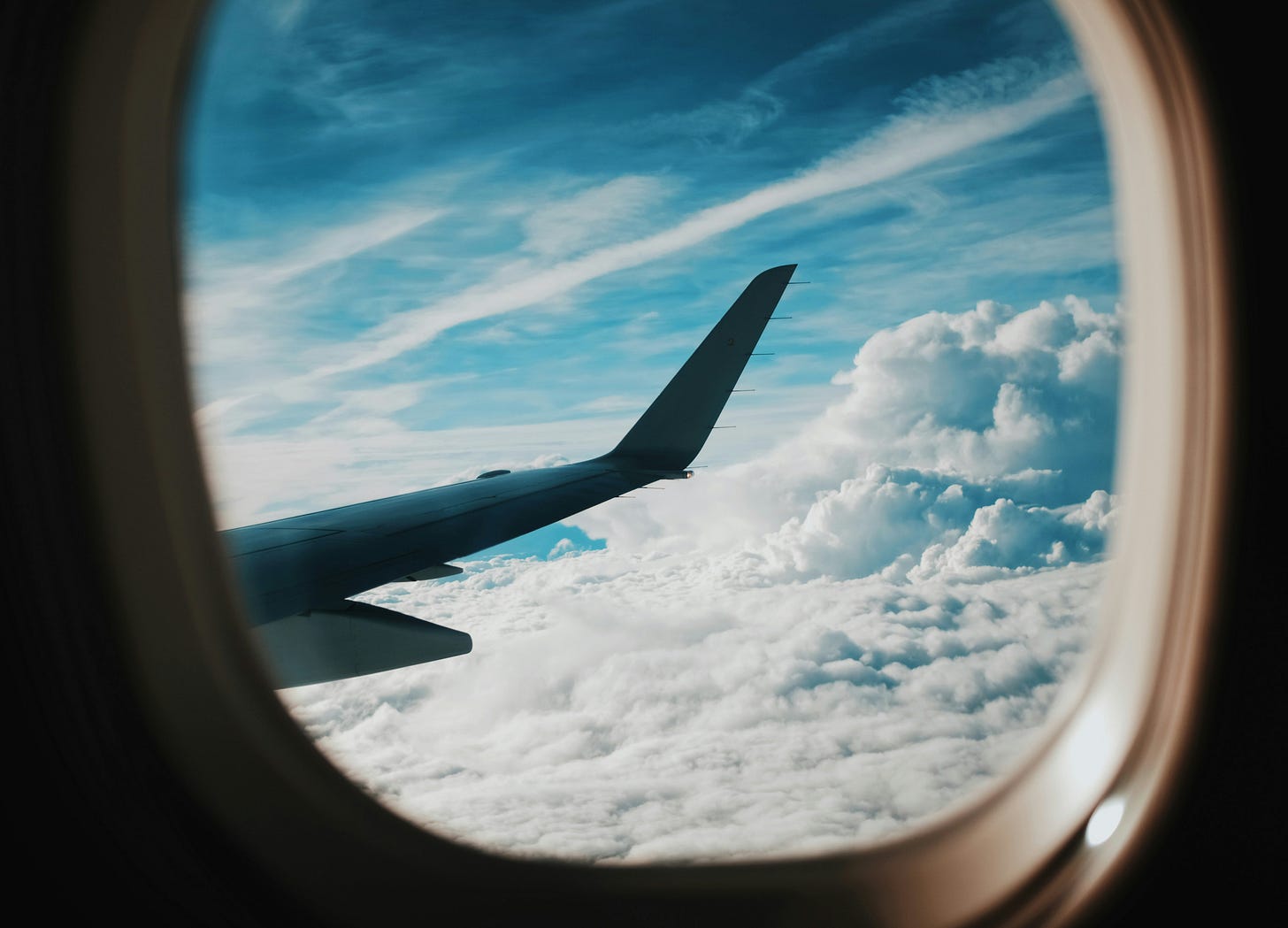On becoming again and again
Reflecting on the biggest Buddhist teachings that helped me get through 2024 and how every moment is the bardo

I have cried on almost every flight I have taken for as long as I can remember.
It is those 5 to 10 minutes when the wheels of the plane lift up and you are ascending to 35,000 feet — that space in time when the movies aren’t available yet, the WIFI can’t connect, and your phone just lost cell phone signal.
It is in this space when I take the invitation to pause, look through the small oval window and see the blue and white sky, an endless horizon and let the emotions of my trip catch up with me. It is this in-between state, this transition, that allows me to go deeper within myself, to reflect where I have come from and where I am going.
I am currently writing to you today from 29,826 feet in the air, flying somewhere over Baltimore on the way to Newark, less than hour away from landing in Newark. As always, I teared up when we lifted off from Houston, this time thinking about this past year and the year that is about to come.
This past year was one of the most challenging in my life, having to navigate the emotional complexity of grief, the pulsing undertone of anger and the aching gnaw of uncertainty. As I have connected with my friends and community in the past week, I don’t think I am alone in this. It seems that we are all feeling a deeper level of suffering, personally and collectively.
As we transition into the new year, I am reflecting on the teachings that have saved me this year, which have helped me make stay grounded and sane. These teachings are what have gotten me through the mud — and will continue to be valuable resources as I, we, start transitioning what I hope will be a year filled with blooming lotus flowers.
Boundaries, boundaries, more boundaries please
For me, the heart practice of equanimity helped me keep compassion alive and reach a new level of healthy boundaries this year. As someone who often takes on the role of caretaker, I have always instinctively jumped at the opportunity to be the “hero” and this past year has taught me how toxic this pattern can be, particularly when you are self-sacrificing to the point of disappearance.
A dear friend in one of my Buddhist study groups shared this quote from Prentis Hemphill with me, and it has been my guiding force all year and hope that it can be for you as well:
“Boundaries are the distance at which I can love you and me simultaneously. Boundaries give us the space to do the work of loving ourselves. They might be, actually, the first and fundamental expression of self-love.”
For me, I’ll continue to take this important teaching into 2025 and beyond. I’ll continue to use it as a launching pad for knowing that I can still care for myself while I care for others.
Radical acceptance = joy + power

Buddhism is based on the fundamental teachings of the Four Noble Truths, the first of which is the simple, radical and often times challenging teaching that life is suffering and there is suffering we cannot avoid: birth, aging, sickness, death; and the second being almost all other types of suffering can be mitigated, transformed, healed.
This teaching isn’t shared so we can wallow in our own suffering — in fact, it is shared to help us accept the conditions around us, to stop running around in circles, to stop living in a space of denial, which often causes us much heartache.
I read a quote from Pema Chodron almost 10 years ago that said we shouldn’t hope. I remember being jarred by this and not really understanding why she would share such a pessimistic, almost nihilistic, outlook of life.
I understand now, through lived experience, that sometimes hope is another form of grasping and that our desire, our ache to want things to be different can cause an unbearable amount of suffering. This is the most basic human instinct — to desire. This can come in many forms: Wanting a better job, a better house or more globally wanting to stop the genocide in Gaza or wanting a different President. This acceptance isn’t for us to give up, but allows us to stop spinning in the suffering of our own making so we can actually hear what our hearts are telling you underneath all the noise of our minds.
When we can fully accept the situation, and see it as is, insight arises. For me, that was remembering that nothing is forever and that our hearts have the capacity to withhold a lot of shit.
It is through this acceptance, I was able to let go of the things I can’t control, and shift my relationship to the pieces I could — and this alone, not only gave me space for joy, lightness, breath but also helped me step back into my power. And this is what I’ll continue to practice not just in 2025 but for the rest of my life.
The magical space of in-between

For almost 15 years, the 10-ish days from Christmas to New Year’s has been a time where I get to indulge and veg out. I sleep in, eat with reckless abandon, play video games. No work, no plans. I just allow myself to rest, to be.
This time period of transitioning from one year to the next is our collective invitation to re-evaluate our lives. Often, we are fed messages that we are not enough, that we need to be skinner, wealthier, more productive and for every resolution, there is a 30-day challenge to get us to our goal.
But what I have learned over and over again is that this is the falsehood of our contemporary life — that we build our life around goals, destinations, which in turn makes us miss what’s right in front of us. And what’s right in front of us is about 95% of our lives. We are not just our milestones, we are everything in between and if we’re not careful, if we do not bring ourselves to the present moment, to witness our living, we will miss it all.
In Tibetan Buddhism, the bardo — bar, meaning “in between” do, meaning “two” — is typically known as the period of time between life and death but this deep teaching invites us to explore our different states of in-between, every and any transition. (For more on the bardo, read this incredible series from Ann Tashi Slater.)
In other words, the teaching invites us to see that every moment is a transition, a moment of departing and then arriving.
As Yongey Mingyur Rinpoche says:
“When we sensitize ourselves to the subtle transitions of emotions, or of bodily change, or shifts in social circumstances, or environmental transformations such as differences in landscape and light, or developments in language, art, or politics — we see that it's all always changing, dying, and becoming.
"When we move past the convenience of language and categories, every second manifests the bardo of becoming. Becoming and becoming.”
To me, this is an incredible invitation, a grand view for us to radically live in the present moment — to not let the past weigh us down and to not be overwhelmed by the future. To not be so fixated by the goals of the year ahead but instead, recognize and celebrate exactly who we are and where we are here, right now.
In other words, like the age old adage says, "it’s the journey, not the destination.” Yes, this saying is tired, overused, has probably lost its meaning and power with how many times we’ve seen it on memes and on discounted signs at Marshalls, but it’s true.
When I first started writing this, I was suspended in the air, in literal transition, in a bardo, but have since then landed, driven home and woken up to a new day. Much has happened between then and now: I sang “Say My Name” at the top of my lungs in a shuttle bus, I connected with one of my best friends and felt his love and support, Jess ate a delicious black bean patty and listened to an incredible story on Austria, we looked up at the night sky and saw the stars shining back at us, we hugged our cats, we lit the sixth candle on our menorah, and I woke up to a beautiful blue and white sky — the same one I was just flying through when I first started writing this to you.
And if I hadn’t been present to those moments of in-between, I would have missed a lot of joy, awe, beauty, love. I would have missed out on a hell of a lot of living.
So whatever New Year’s resolutions, goals, intentions you make, please remember that every little moment leading to that big moment is what this life is really about. Don’t miss it.
Don’t miss your becoming.
So my dear friends, happy new year. I hope 2025 gives you all the tools, practices and insight to help you connect with this thing messy, beautiful thing we call life as much as your heart allows. May we witness ourselves and be present to the big moments and every single magical moment in-between 🙏




happy new coming year dear Kim. and yes to your elucidating words reminding me to be present for this moment of sending you appreciation for the past year on this eve of transitioning to January 1st, 2025. for me, it will be a practice of equanimity: non-reacting, pausing, breathing, taking it all in, squirming, struggling, stopping, accepting, embracing, exhaling, and moving into equanimous-spaciousness.